Interview: Choreographers Brett Ishida, John Wannehag, And Jeremy Galdeano Offers BroadwayWorld a Sneak Peek of KEEPSAKE at The Hobby Center
This one-of-a-kind dance production will only be in Houston from January 12th-13th and Austin from January 15th-16th!
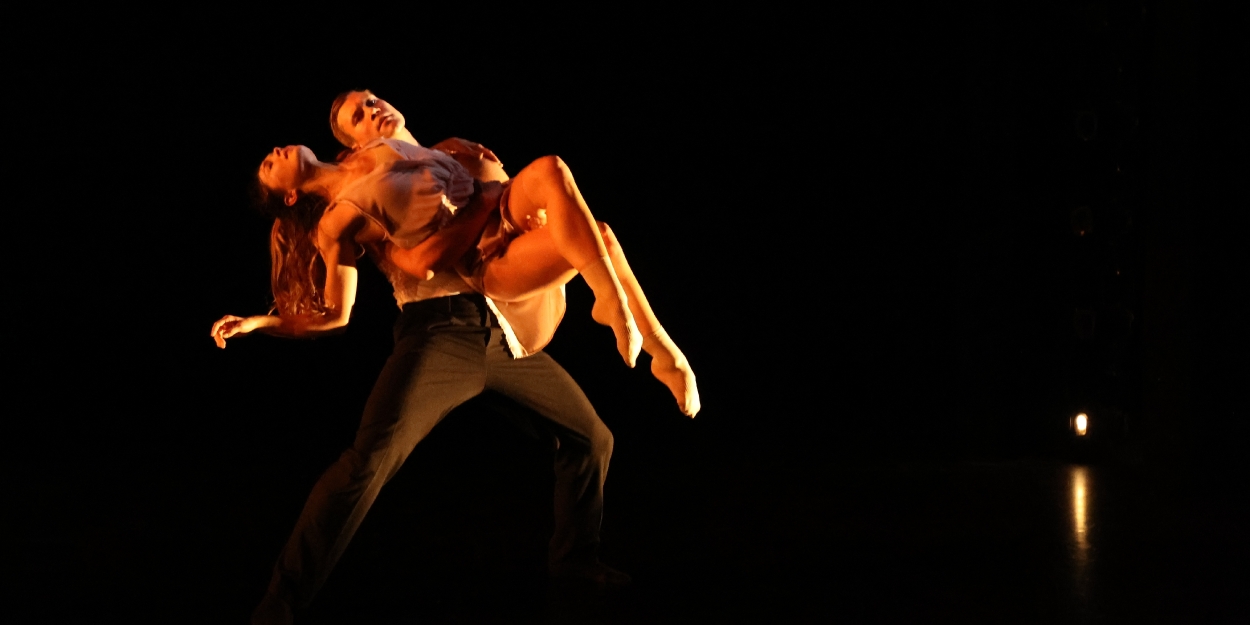
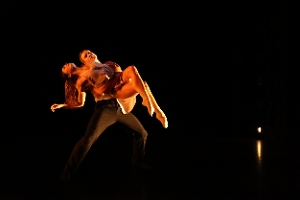
Photographed by Amitava Sarkar
The Hobby Center for the Performing Arts presents the world premiere of keepsake in collaboration with ISHIDA Dance Company (ISHIDA) featuring works choreographed by Brett Ishida, French choreographer Jeremy Galdeano commissioned by Les Grands Ballets and Mannheim National Theater, and Swedish dancer and choreographer John Wannehag formerly with tanzmainz. keepsake will play Houston January 12-13, 2024 at Hobby Center for the Performing Arts. Featuring venerated dancers from companies such as Houston Ballet, The English National Ballet, and Netherlands Dance Theater (to name a few), ISHIDA blends contemporary dance with theatrical elements while retaining the physicality and beauty of the human form from traditional ballet.
The only company named in Dance Magazine’s “25 to watch” for 2023, ISHIDA’s program includes the world premiere of an original ISHIDA poetic narrative titled keepsake which explores a dissociative fugue state and what might have provoked it. The program also features works by two respected (but rarely seen in the US) European choreographers: the critically acclaimed work “If the world was ending, would you hold me tight?” by Swedish choreographer John Wannehag and a world premiere by highly sought-after French choreographer Jeremy Galdeano whose work has been presented in Canada, Germany, Italy and Mexico.
BroadwayWorld got the chance to speak with the three choreographers who are devising this program: ISHIDA, John Wannehag, and Jeremy Galdeano. They give us a sneak peek into who they are as artists, their artistic visions for this program, and where they are with the show's development.
Brett (Ishida), can you tell us about your dance company ISHIDA? Where did the name for your dance company come from, and what are your goals and values as a dance group?

Photographed by Amitava Sarkar
ISHIDA: Ishida is my family name. It is Japanese for “stone field”. ISHIDA is going to be 5 in January, and it is very exciting because it was not easy getting here because–if you do the math–you understand that we started right before the global pandemic. As a performing arts company, in terms of exposure and getting people to know about us, it's the worst time to start. All of our performances were delayed and halted.
Photographed by Amitava Sarkar
I always thought that that we should create these works that are connecting to our audiences, that we really try to bring the audience in, and that we share insights into the work. We do that throughout the program, which isn't typical of a large performing arts company. When we have guest choreographers, we have them share some insights into the work, with the hope that this will help our approachability and relatability.

Photographed by Amitava Sarkar
That is a huge part of why we're all doing this; it is for the people that come to watch it. I mean, during the pandemic, we did some residencies without any audience members, and the dancers all would say, this is so weird and not right that we don't have anyone here to see what we're doing.
So, in terms of mission and vision, ISHIDA is all about community. It’s our audience, but it's also our dancers…it’s the people that we bring in…it's our volunteers…it's the educational outreach component that we do with underserved communities, bringing dance to people that typically don't have the resources to experience any kind of dance workshop…
.png)
Photographed by Amitava Sarkar
Hopefully, our works help promote or prompt some kind of introspection for the audience or trigger some kind of memory that is meaningful to them. I just want people to come see the show and have an experience that stays with them.
I also want the dancers to experience something. We are bringing all these different dancers and guest choreographers from different backgrounds, and it's for them to have the opportunity to experience and work with these different artists that typically aren't presented here in the U.S. Our work is very intimate and with a small team, and we love to just jump in as a whole team.
Jeremy, how were you connected with Brett?
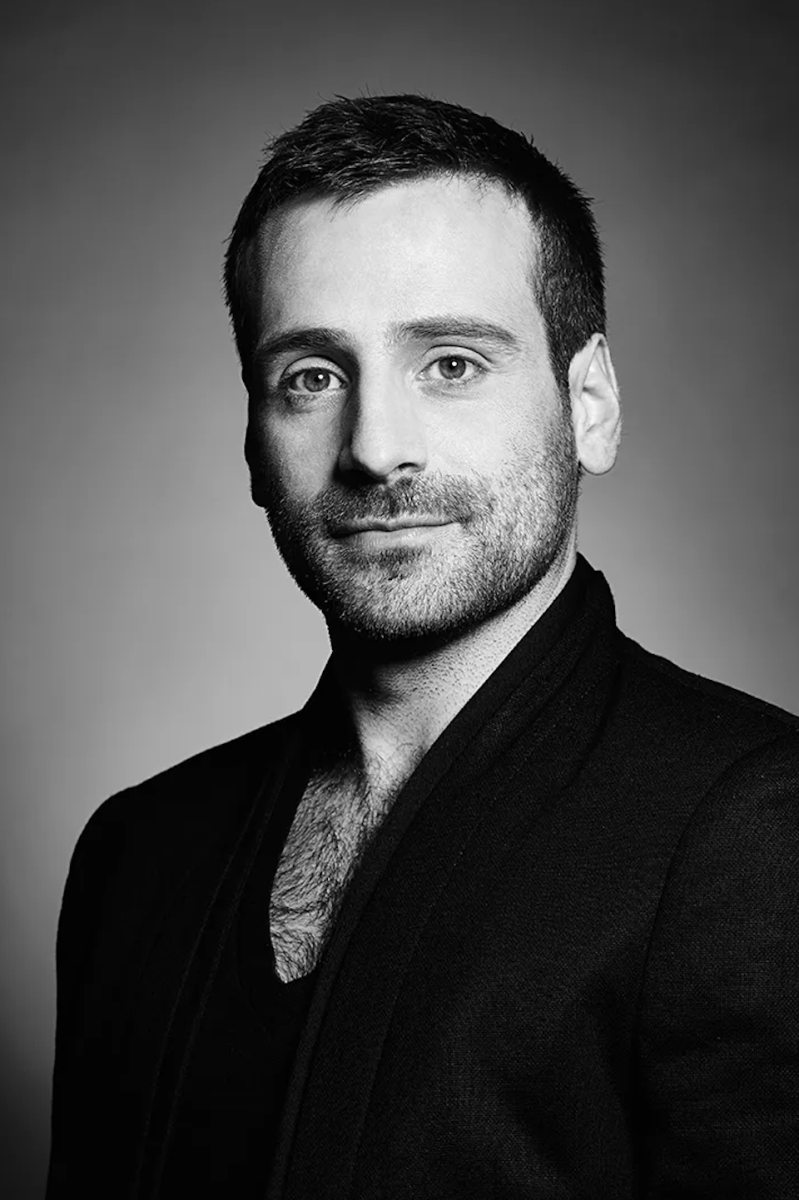
Jeremy Galdeano: I met Brett in 2001 in Montreal. I worked with her for a season or a season and a half. It was that experience where I learned English. I was a young French dancer at the time.
Then, two years ago–August 2022– I worked with her within ISHIDA. Brett contacted me and said that she wanted to invite different artists. It did not happen at the time because of COVID, but we finally presented the duo of mine two years ago. However, I did not have a chance to go there because I was busy somewhere else. So, a friend of mine restaged my work. This time around, it will be the real deal. I will be able to come to the U.S. and actually create work here in Texas!
John, what connected you with ISHIDA?
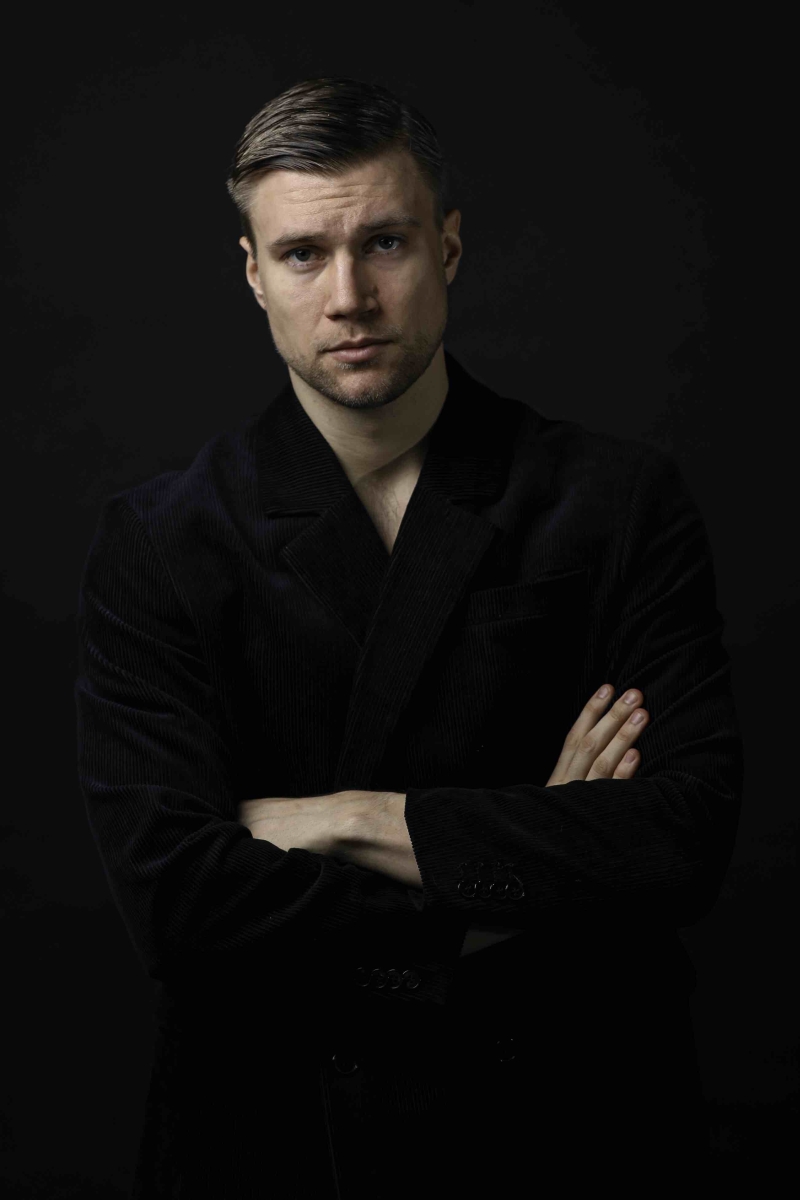
Photographed by ©De-Da Productions
John Wannehag: She found me on Instagram, actually! I had some other U.S. friends who I was dancing with, and we started talking. Then, she asked if I was interested in setting a work and also dancing in her work. So, this is going to be my third production with her. For my first piece, I restaged the duet with my old partner that was “forget me not”, which is directly based on the feeling of being left on the dance floor at a high school prom. It was very heartbroken and heartfelt.
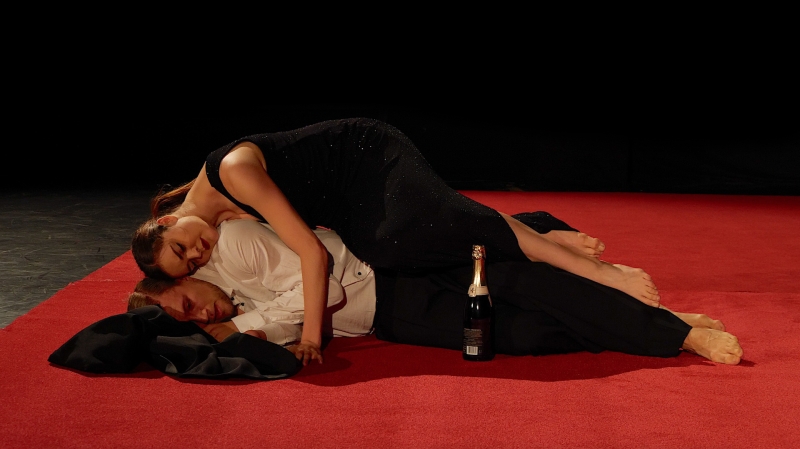
Forget me not
Photographed by Amitava Sarkar
I really like Brett’s idea and philosophy behind ISHIDA, which is to bring all of these talented dancers in to work with each other, when we would not be able to work with each other otherwise.
We all respect each other tremendous amounts. A lot of the dancers involved I knew of before, but I had never danced with them in a studio, which has been beautiful. I mean, Europe is quite big, but the dancing world is pretty small. All of us in the cast have at least four or five friends in common, and it turned out, one of the cast members was best friends with one of my best friends.
Brett, can you tell us about the premise of keepsake?
ISHIDA: There are four works within the program. One is keepsake–which is my work– and I'm doing another short work. Then, Jeremy is creating a work, and John also has a work in the program. I'll speak to keepsake, which is where the title of the program comes from. The work stems from an experience that I had when I was in Greece.
So, after I danced professionally, I went back to school. I went to UCLA, I studied literature, and I also studied ancient Greek tragedy and poetry. I started writing these poetic fragments, and they are actually part of my process now. When I create works, I use a script based on my studies. So, they are based on a framework of a dramatic tragedy or play as well as some studies and film that I did when I was at UCLA. After UCLA, I also did a masters in Montessori Education. It was not only a teaching degree, but also a lot of work in psychology and case studies. I remember reading case studies and thinking, oh, I have that condition, or my parents act like that!
Anyway, after I received my graduate degree, I saved money because I had studied ancient Greek and then in my master’s degree, I also studied western performing arts. However, I felt that it was disappearing in education, so I wanted to go to Greece. I ended up being smitten with the country, and I lived on the island of Mykonos for five years. I taught English at a school as well as privately as a consultant for very wealthy families. I also taught dance workshops that were free in the community at the local municipal theater.
So, this one day I was teaching, and I get a knock on the door. I'm with these high school students, and the owner comes and says, “I need you to step outside the classroom. Can you give them something to do?” So, I agree to it, give my students some activity, and step outside into the hallway. I was told that one of our colleagues–a young woman in her 30s, single, having lived on the island all of her life–was frozen outside her door. They tried to move her, and she wouldn't. She would just go back to the held position. Her eyes were open, but they didn't blink, and people tried to speak to her, but it appeared like she didn't understand or that we weren't getting through to her. It seemed like a catatonic state or some type of fugue state where your psyche has to shut down, you literally flee your body, and you don't know that you've left your body.
My boss asked if I could be with her students, and I said, “Sure,” after talking to her for a while. After an hour and a half or two hours, the teacher who was frozen was gone. Her mother had come and was able to get her home and out of the building somehow. I don’t know what happened, and when we tried to follow up, the subject was shut down. I never saw her again. She didn’t finish up the school year, and I still think about it today, even through it happened almost ten years ago. I wonder, where did she go? What happened to her? What triggered that? So, I wrote this script based on this woman's experience.
Then, why it was so covered up bothered me. Why did the family have to be embarrassed or why could no one talk about it? I understand there's may be privacy issues, but there's just so many questions…I knew the family, and I knew her…she was a friend and then never even being able to speak to her after that was heartbreaking. So, this piece is dedicated to this woman. Her name is Elena, after Helen of Troy, and the piece explores a dissociative fugue, which is what we believe she experienced. We also hint at what may have provoked this fugue state. The piece starts in a fugue, and then she opens this box. Through the opening of the box, we go backwards in time, and we can see why she went into the fugue state to begin with.
John, can you tell us about the name of your piece within keepsake?
John Wannehag: My piece was premiered originally this year in January in Houston, but we never played in Austin. So, now this time around, we'll be playing a much bigger theater in Houston and then also in Austin. Brett unofficially calls it the rave piece, but it is officially called if the world was ending would you hold me tight, and it comes from my experience from living in Germany and being introduced to the techno scene. It’s about connecting with other people through music and dancing. The piece is edgy and witty. For American audiences, it may be a little bit experimental, but I think it's fun, full of heart, sensual, and very athletic and physical. It is also working through different disciplines. It is not all contemporary; there is some modern, hip-hop, breakdancing, ballet…a lot of really rich movement languages!
Then, additionally (from my filmmaking), I worked a lot with lights for this piece. The original work had portable LED lights on stage that dancers moved around to shape and create the space. Because there's a much bigger space we are working with now, the dance and lights have developed. So, I'm excited to see it in a bigger space and with some new dancers!
Jeremy, can you speak to your piece within keepsake, as well?
Jeremy Galdeano: My piece concerns a past relationship I was in for 15 years. It ended, so it's basically a portrait of that relationship in 10 minutes. The piece concerns someone that was very dear to me. I didn't want to lose them, so it took time for us to replace each other and not lose each other in life. The piece is intimate, poetic, rough, tough love…..I use gesture, so we go into the human gesture a lot. I’m digging into these emotional states and the past, but it is not going to be tragic. It has comic parts and sexy parts, and it will express the highs and lows that a relationship can be.
It seems that all three of you focus on the human experience and connection in your pieces. Is that what connects all these pieces in the program?
ISHIDA: There is a part of that. I mean…you think: what is a keepsake? The definition of keepsake is this thing that someone holds dear, and it'll be interesting to see people's perception of that word because I think the reason why I've curated this whole program with these different voices and different narratives is that I believe that all these things will relate and touch our audience members in different ways.
How has creation and collaboration gone for this piece?
John Wannehag: I think we're all very different choreographers, and we have our own work methods. I can't speak for Jeremy, and I'm not familiar with his methodology or process, but I work very much from theme or a visual idea, and then I develop steps together with the dancers. Then, the steps feed off each other. Usually, it's quite a strong idea. Brett works a lot with text and because she has this background–which is super rich–she has a lot of really strong words that creates associations and draws things out of us. Therefore, I think everybody is very collaborative.
Jeremy and Brett, where are you both in the process of rehearsals? Are you currently designing and devising choreography, or are you running through works now?
Jeremy Galdeano: In my head, I have a sketch of it, an idea I have started on my own because I like to be prepared. So, I am just building, listening to music, and imagining the work. Then, in January, I will fly in and start staging my piece!
ISHIDA: Jeremy and John are very prepared artists. Different choreographers work in different ways, but I think all of us prepare and do things outside the studio before entering into the process with the dancers. We have the music and lots of other parts of the preparation already fine-tuned that go into the process. However, a lot of it also happens in the rehearsal room. There are these unknowns where you experiment, you try things, and some things that work in your head do not work when you try them. You may find that you have to cut that, scratch that, or add something unexpected that you find as you're working with the dancers. You may have an idea that morphs into something else that you actually like better than what you had planned. It is very fun!
The rehearsal process is a bit complicated because the rehearsal schedule depends on the piece. Some pieces like keepsake, which is the feature work and the longest piece in the program, is something I started in September with the dancers. The dancers involved and I started to play, rehearse, and create a framework. Then, other choreographers and dancers come in at different times. Jeremey is here in early January. It’s just a lot of logistics, but we always make it work.
The dancers for this project are very diligent, quick, and curious, and they just really love to dive in right away. They don't seem hindered by anything, and it’s really wonderful to just go into a work. Also, the dancers all knew each other through friends or other projects, and even if they don’t know each other, the dancers for the projects I have worked on tend to bond and collaborate very quickly and easily, so that's great.
John, your piece in particular premiered in January. With that, did you see any development or changes happen in preparation for this larger premiere?
John Wannehag: I think choreography is essentially just steps and an idea of how to move in space and time, and it's the dancers’ job to be artists within that. If you're lifting an arm, you can lift it in so many ways, and you can say so many different things. We have a beautiful group of dancers with all different backgrounds that brought themselves into the piece. In January, I even ended up dancing the piece for two shows due to an injury, which was really interesting. I had to step into my own work and bring my own experience from the outside, and I had to learn through my fantasies of these steps and how they could be shaped in space, which was a really surprising experience, but a really fun one.
This time around, I'll have three new dancers out of the four, which is really exciting because–even if we already created all the steps–with three new dancers, we will have the chance to figure out who wants to do what. Once I understand the dancers' personalities, who they are as an artist, what makes them tick…we can make it our own. I know some of the dancers from before, from all of my traveling. I have known one of the girls for almost 10 years now, but I haven't been in the studio with her for around 7 years. I am excited to see her and for her to bring her experience into this work
What would you like audiences to walk away with after viewing your pieces?
Jeremy Galdeano: For me, it’s simple. I hope that audiences can interact and relate to the story that I present through dance.
John Wannehag: I don't think you always have to understand a dance piece. Audiences don't have to know if there's a story or narrative, but if you feel something and you think it's good or bad or it makes you wonder or you want to laugh…then I've done something right. If the audience walks away feeling something from my piece, whether that's, oh, that was cool…that was weird...or I want to see more of that, then I did a pretty good job. I mean, a night out in Germany at a techno club can be pretty weird and bizarre in its own way, so I think it's all of those different experiences coming together. That is what makes it beautiful.
ISHIDA: I mean, we're not telling anyone how to feel or how to approach the works. We are just giving them a doorway and opening a thread to what's behind the work so they can have their own experiences, whatever that may be.
keepsake is just such a unique project…what we're doing and where we are doing it in Houston, Texas is very exciting. We always receive a warm welcome from our Houstonians, but they should know that these programs and works are ephemeral. You'll never see a show with the same kind of combinations because people are coming from different countries and from different companies. It's a logistical nightmare, but it's a really special and unique evening of diverse dancers, works, choreography, and narratives. You won’t want to miss it.
The world premiere of keepsake by ISHIDA Dance is happening in Houston on Friday, January 12th at 7:30 pm and Saturday, January 13th at 7:30 pm at the Hobby Center, Zilkha Hall, 800 Bagby Street. Tickets start at only $38, and they are available online at www.TheHobbyCenter.org and in person at the Hobby Center Box Office. This piece is being produced in collaboration with the The Hobby Center for the Performing Arts.
Comments

Videos

